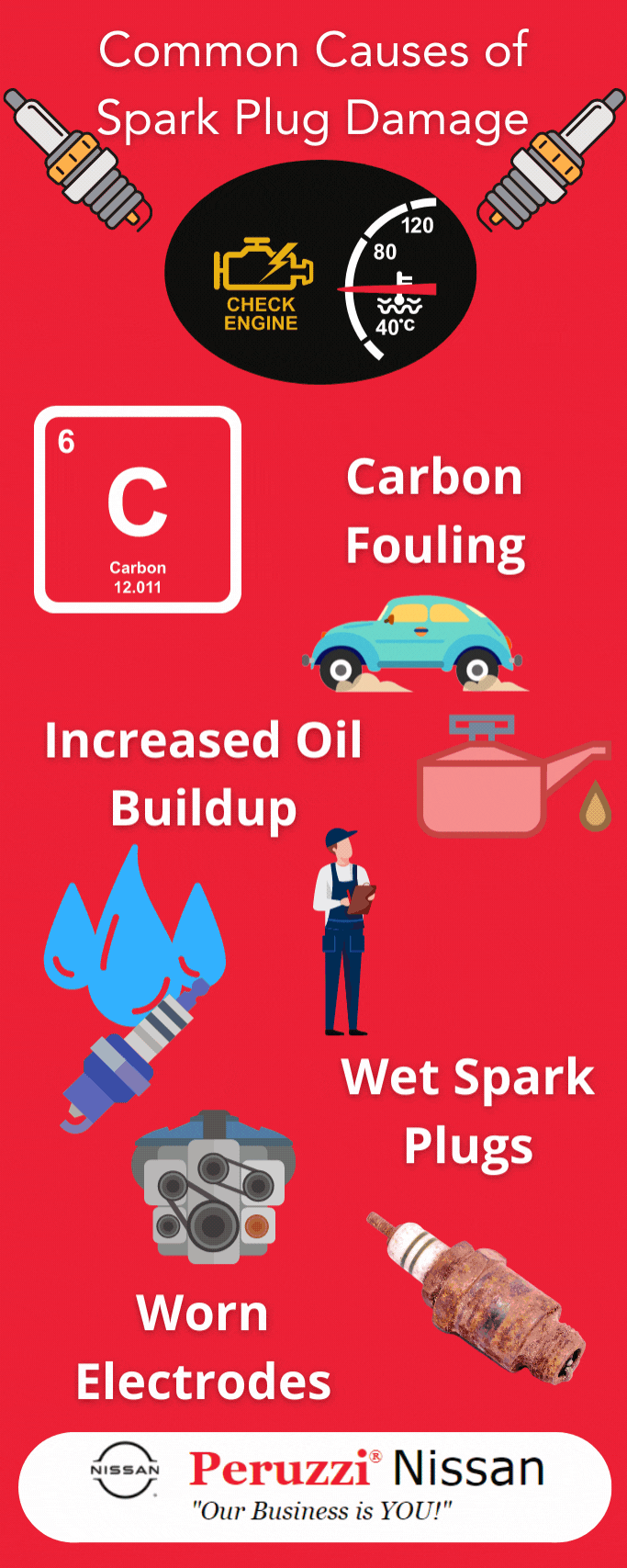
It may happen during your morning commute, on your way to a hot date, or even picking your kids up from school. It usually occurs without a moment’s notice and is something that every driver has dealt with at some point in their driving career — the dreaded check engine light.
For many drivers, when they see this light turn on their dashboard, they might start having a panic attack and start worrying about how much money it’s going to cost to fix the issue. However, you shouldn’t stress — there are plenty of common reasons why your check engine light came on that won’t cost you an arm and a leg in car repairs.
It Could Be the Spark Plugs
Your engine is a complex piece of machinery requiring every component to work together to run. Spark plugs and wires provide the combustion in your engine that allows your car to get you from point A to point B. So when you ignore them, you’ll experience reduced performance. Plus, you could clog up your catalytic convertor, damage the O2 sensors and mess with the ignition coils.
Bad spark plugs remain a common problem that can trigger your check engine light, but it’s also one of the most routine auto repairs your local auto body repair shop performs on a regular basis.
There’s a Sensor in Your Car Experiencing Problems
Modern cars have a variety of sensors that communicate with each other to ensure your car functions at its optimal efficiency. These sensors monitor everything from the air going into your engine, how your powertrain functions and various other critical functions that keep your car moving. Issues with any of these sensors can trigger your check engine light but shouldn’t ring up a high repair bill.
One sensor in particular that can potentially trigger your check engine light is the mass airflow sensor. This particular sensor measures and monitors the air going into the engine, ensuring that the right mixture of air to fuel gets reached to start your engine properly.
Did You Remember to Tighten Your Gas Cap?
Depending on your car’s fuel economy, getting gas is a weekly venture that makes up a significant part of your weekly routine. Sometimes, you may forget to completely tighten your gas cap before you continue with the rest of your day when you’re getting gas. If left unattended long enough, this can trigger your check engine light.
When your gas cap isn’t functioning correctly, fuel vapors leak and pressure isn’t maintained inside the engine. A loose gas cap can trigger your check engine light and have you making more frequent trips to the gas station — but it’s also the cheapest fix on this list.
Issues With Your Oxygen Sensor
Your oxygen sensor measures how much unburned oxygen flows through the exhaust system at any given time. Too much or little unburned oxygen can damage other engine parts and require costly repairs. When it’s off, you’ll burn more fuel and risk damaging the spark plugs.
A faulty oxygen sensor is a frequent reason why the check engine light comes on in cars worldwide.
It’s the Catalytic Converter
Your car’s catalytic converter’s responsibility revolves around the carbon monoxide that builds up in your engine. This component converts carbon monoxide into carbon dioxide – which the environment appreciates. When your catalytic converter breaks, the engine runs hotter – and you’re virtually guaranteed to fail any emissions or diagnostic test.
If your check engine light comes on during your commute, you have options available that may not end with making costly repairs. Bring your vehicle to the Peruzzi Nissan Service Center, and we can take a look at it.
We also have service and parts specials if your vehicle needs service to fix the check engine light issue. If you’re looking to upgrade your vehicle, we also have a complete collection of new and used cars for you to browse. Stop by Peruzzi Nissan today at 165 Lincoln Highway in Fairless Hills, PA, for the answers – and the solution to your check engine light!





![[Facebook]](https://www.peruzzinissan.com/blogs/385/wp-content/plugins/bookmarkify/facebook.png)
![[LinkedIn]](https://www.peruzzinissan.com/blogs/385/wp-content/plugins/bookmarkify/linkedin.png)
![[Twitter]](https://www.peruzzinissan.com/blogs/385/wp-content/plugins/bookmarkify/twitter.png)
![[Yahoo!]](https://www.peruzzinissan.com/blogs/385/wp-content/plugins/bookmarkify/yahoo.png)
![[Email]](https://www.peruzzinissan.com/blogs/385/wp-content/plugins/bookmarkify/email.png)
